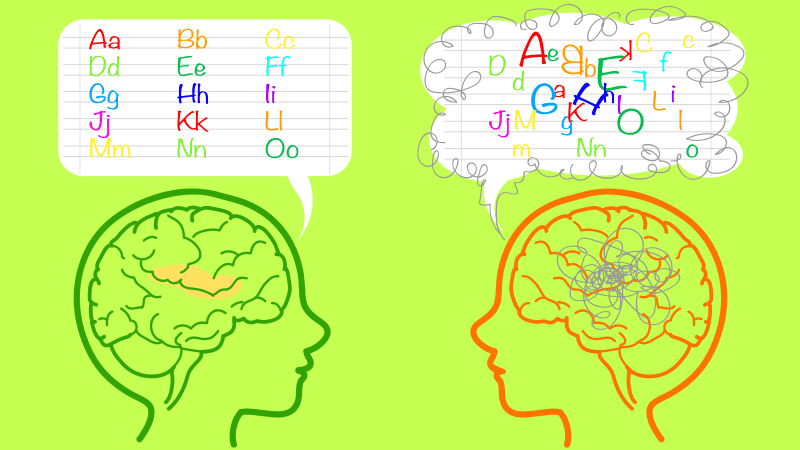Having troubles with understanding words, letters and numbers are the signs of dyslexia, which is a learning disability. It affects a person’s ability to process language. According to recent studies, dyslexia accounts for approximately 80 to 90 percent of all learning disabilities. Research also shows that around 20 percent of the population experience dyslexia.
Specialists say that it can be extremely difficult to get to the root of this specific learning disorder. A lot of people underestimate this disorder. However, searching for a qualified specialist in this field, who will be able to manage this problem is as important as looking for heart attack treatment ways. If dyslexia is left untreated, it can have repercussions that reach beyond the workplace or classroom. Doctors say that with proper treatment it is possible to improve spelling, reading and other language skills. The following section of this article depicts the information everyone should know about dyslexia.
What is dyslexia?
In medical terms, dyslexia is a learning disorder that results in having difficulties with reading, identifying speech sounds and learning the way sounds relate to letters and words. Some people also call dyslexia a reading disability. This disorder affects areas of the brain that process language. It should be also said that people with dyslexia have normal vision and are just as smart as their peers. However, kids with this learning disorder struggle in school as it takes them much longer to read.
As was mentioned above, people with dyslexia have normal intelligence and a normal vision. Children with dyslexia can succeed in school but they require specialized education and tutoring. In addition to that, emotional support plays a crucial role for these kids.
There is no cure for dyslexia but an early assessment and intervention can result in the best outcome. In some cases, dyslexia can go undiagnosed for several years and will not be identified until adulthood. Although, you should keep in mind that it is never late to look for help.
Is dyslexia a learning disorder?
Some people question dyslexia being a learning disorder, but it actually is. It is a reading disability that is typically characterized by a primary phonological processing deficit. People with this condition have trouble with spelling and decoding individual words. This issue can affect both children and adults.
Dyslexia is not a new condition. It was first found in 1878 when a German neurologist noticed that some of his patients had difficulties with reading and they were consistently putting words in the wrong order. Specialists say that dyslexia affects people in different ways, therefore its symptoms and treatment among different people.
Even though dyslexia is a learning disorder, it does not mean that people who experience it have low intelligence. There are a lot of people who were diagnosed with this condition but they still perform well at work or at school. However, if your kid was diagnosed with dyslexia, he/she should be enrolled in tutoring programs and receive specialized education. Dyslexia can be mild or severe and it was estimated that approximately 15 to 20 percent of the population has symptoms of dyslexia.
A lot of people with dyslexia are able to manage and cope with their learning disabilities. However, it should be also said that people with dyslexia are not able to fully experience a range of feelings. It is also a well-known fact that inability to process words, sounds can trigger anxiety, embarrassment, discouragement and depression.
What are the causes of dyslexia?
Specialists link dyslexia to our genes and that is the main reason for this conditioning running in families. Therefore, you are more prone to experiencing this problem if any of your family members have it. During the imaging scans in people with this learning disability, the areas of the brain that have to be active during reading do not work properly.
Normally, when children learn to read, they first determine what sound each letter makes. The next step is learning how to put these sounds in order to form words. At the end, they have to figure out what each word means. Although, children with dyslexia have troubles connecting letters to the sounds they make and then blending these sounds into words. Thus, people with this condition might read the word cat as a tac. Because of this, reading becomes extremely difficult and slow.
As was already mentioned, dyslexia can be different for everyone. Specialists state that it is possible to manage mild forms of this disorder. But there are also people who have difficulties overcoming this problem. Even if a kid cannot outgrow dyslexia, he/she can still go to school and succeed in life.
What are the different types of dyslexia?
Dyslexia has different types and they are as follows:
- Primary dyslexia: this is the most common type of dyslexia and it a dysfunction rather than damage to the left side of the brain, which does not change with age. The severity of this particular disability varies among different individuals. However, the majority of people who receive appropriate education treatment can be successful throughout their lives. But there are also people who struggle with reading and spelling throughout their adult lives. The primary type of dyslexia is passed through genes in family lines or through new genetic mutations. This type of learning disorder is found more in boys than in girls.
- Secondary dyslexia: this type of dyslexia is caused by problems with brain development and it occurs during the early stages of fetal development. Doctors claim that secondary dyslexia disappears as children mature and it is also more common in boys.
- Trauma dyslexia: this type of dyslexia results from brain trauma or injury to the area of the brain that controls writing and reading. However, it is less common than in comparison to other types of dyslexia.
- Visual dyslexia: it is normally referred to visual processing disorder. This is a condition where the brain does not interpret visual signals properly.
- Auditory processing dyslexia: this a condition that causes problems with the brain’s processing of speech and sounds.
What are the symptoms of dyslexia?
Some people have a wrong conception of dyslexia and they think that classroom teachers are able to identify whether a kid has dyslexia. However, this is not true. They might be able to identify whether a kid has early signs of this learning disorder. Further assessment should be performed by a psychologist or other healthcare professional for the purpose of diagnosing this disorder. There are several symptoms of dyslexia and they are as follows:
- Delayed language development
- Difficulties with recognizing the differences between similar sounds or words
- Difficulties with learning new words
- Difficulties copying from the book or board
- Troubles with reading, learning, writing and spelling
- Inability to remember content
- Children might be uncoordinated and have problems with organized games and sports
- Difficulties with identifying where is right and left
As was mentioned above treatment of dyslexia is as important as heart attack treatment, for instance. Dyslexia left without treatment could cause severe damage to life, making it impossible for the person to function properly during regular daily activities. If you or your children experience any of the aforementioned symptoms, you should seek immediate help. Keep in mind that looking for help is never late.

